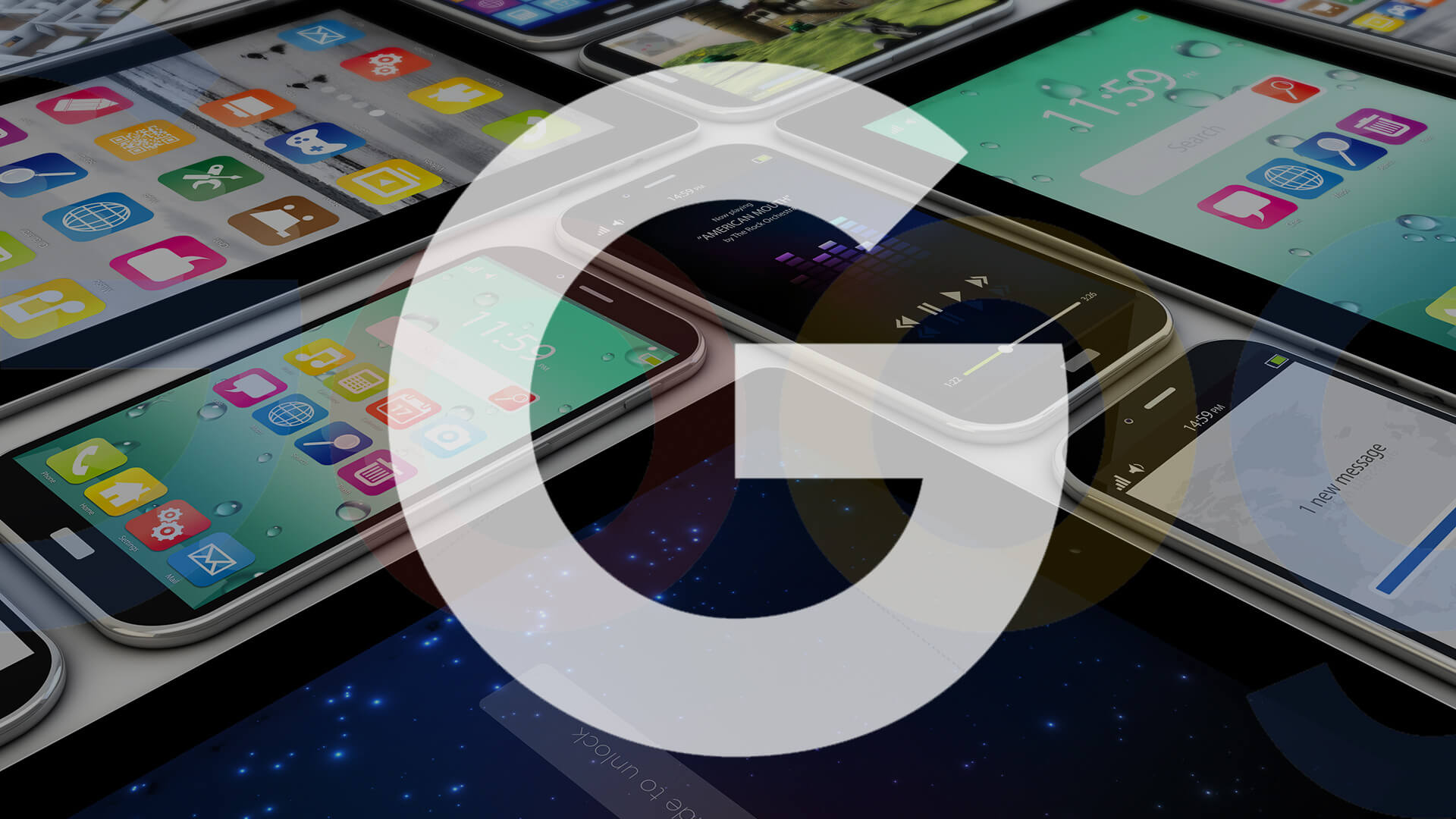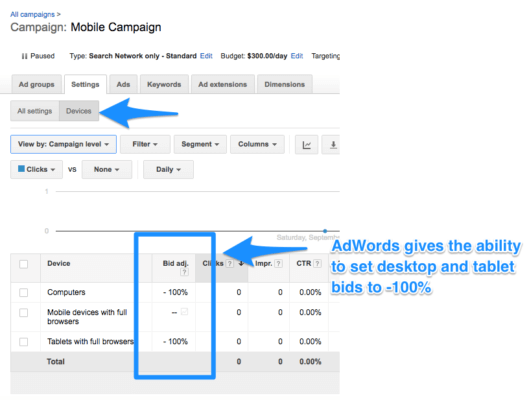
During the first half of 2016, one very popular search ad test was benchmarking click-through rates of ads with “no device preference” vs. “mobile preferred.” As confirmed by Google and Bing reps worldwide, the use of mobile-optimized ads increased CTRs by almost double when compared to ads with no preference that were served to users on mobile.
Not only would the SERP actually prefer these ads and serve them in higher-ranking positions, but SEMs were able to develop creative that was specific to mobile searchers. For most who tried implementing and testing mobile-specific ad copy, we saw huge success.
Speaking to your great mobile experience and letting customers know they can complete the purchase process easily from their smartphone was a great way to drive conversions. However, now that mobile preference is going the way of the dinosaur, we need to adjust our strategies.
We are moving away from device-based target settings at the ad level, toward making these adjustments at the campaign and ad group levels.
There are two options for advertisers looking to implement device-specific ad copy and associated tests. The option you select is dependent on your campaign structure and your management process preferences.
Option 1: Use device-based ad customizers
As stated in their best practices, Google recommends that you keep your bidding adjustments as broad as possible in order to reduce overhead and keep your account manageable. This is definitely a valid point, and AdWords provides some great tools to help keep your ads very relevant despite targeting multiple devices in the same campaigns/ad groups.
Ad customizers are a feature provided by AdWords that allow you to dynamically insert ad text based on certain parameters, including by device. Your two options for device customization are “Mobile” or “All” devices. See the full list of attributes.

You could theoretically insert a value for Headlines, Pathway 1, Pathway 2 or Descriptions specifically for your mobile ads. Keep two things in mind: you’ll need an ad running alongside these that doesn’t contain ad customizers, and you won’t be able to use specific content for “desktop only” or for “tablet only.”
This option is great for AdWords accounts that have built campaign structures containing similarly performing ad groups.
However, there is one big caveat here, as stated by Google:
If you notice big enough ranges in performance between ad groups within one campaign, that could even be an indication that your campaign is too broad. Some ad groups might fit better in a new campaign.
The above quotation is a very realistic challenge for many companies. Building AdWords campaign structures is divided (normally) for ease of management and standardization. Not necessarily by actual performance characteristics. Another big challenge is that ad groups may perform differently because the keywords for that associated ad group are very popular on mobile and maybe another ad group in the same campaign isn’t as mobile-focused.
This brings us to option two:
Option 2: Create mobile ad groups or campaigns
There are major benefits to creating campaigns or ad groups specifically for mobile targeting. Yes, we know, it does take some extra legwork, but the benefits are quite substantial (assuming your business prioritizes mobile experience). Using mobile-optimized ads can almost double CTRs and oftentimes make or break your funnel’s success because searchers are expecting mobile-specific results.
Benefits include:
- the ability to easily implement and test multiple ad copy variations by device (the #1 reason);
- seting budgets by device;
- optimizing for device-based goals (CPA, CPC and so on);
- enhancing your ability to segment performance data by device;
- enhancing your ability to implement day parting by device; and
- localizing geofencing ads to tailor their digital experience specifically to mobile.
How to implement option 2:
1. Select whether your device targeting should take place at the campaign level or ad group level.
This is very dependent on your campaign structure and management preferences. Often, SEMs are able to clone campaigns and manage device bidding at the campaign level. Some ad group structures are so large that it would be unmanageable if we did this at the ad group level.
2. Define your ad group/campaign sets that have a mobile requirement and duplicate them. Your bid strategies can be copied over from other campaigns.
Some businesses only possess certain products, verticals, geos or conversions that necessitate mobile-specific digital funnels; you will only need to implement these mobile specific structures if you really need to.

3. Adjust the ad group/campaign device bid settings.
For your original campaigns, set the mobile bid adjustment to -100%. For your new mobile campaigns, set the Desktop and Tablet bid adjustments to -100% (as shown below).

4. Write your mobile creative and set up mobile extensions.
Hyper-focused control over your mobile creative and extensions is one of the main benefits of this structure. Be sure to take full advantage. If you have a great mobile experience, speak to it.
Use phrases like:
- Buy from your phone
- Purchase from mobile
- Mobile purchasing
- Get a quote from your phone
This type of language can be the differentiator when a user is evaluating which path to take once they’ve searched. Make the user feel warm and fuzzy that your mobile experience will be easy on them.
Now that you have this mobile capability…
Google’s thoughts on increased management effort are definitely accurate. This model is not right for you unless you’re able to spend an appropriate amount of time monitoring and adjusting campaigns based on results.
Some opinions expressed in this article may be those of a guest author and not necessarily Search Engine Land. Staff authors are listed here.
About The Author

Related Articles
